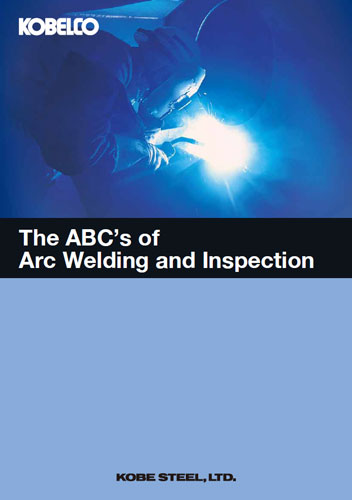Сб с 10 до 16
The ABC’s of arc welding and inspection/Азбука дуговой сварки и контроля
Издание на английском языке
Welding has been used since ancient times, and over the centuries various welding techniques have been devised for making the utensils that are necessary for daily life as well as artistic handicrafts. For more than a thousand years, swords have been made by forging, and sculptures, such as Buddha figures, by soldering and brazing.
The invention of the electric arc early in the 19th century marked the beginning of rapid progress of welding technology in modern times. Nowadays, arc welding has become an indispensable method for joining metals in various fields of industry such as civil construction, shipbuilding, vehicle fabrication, and machinery fabrication. It has expanded its applications by utilizing its advantages and by coping with its drawbacks through unremitting researches and developments.
Contents
Preface
1. Welding Processes
1.1 Classification of welding processes
1.2 Features of arc welding processes
2. Welding Power Sources
2.1 Types and features of arc welding power sources
2.2 Characteristics of arc
3. Welding Consumables
3.1 Covered electrodes
3.2 Wires for gas-shielded arc welding
3.3 Wires for self-shielded arc welding
3.4 Wires, strips, and fluxes for submerged arc welding
4. Welding Design and Fabrication
4.1 Welding joints and grooves
4.2 Strength of welded joints
4.3 Symbols for welding
4.4 Welding positions
4.5 Welding conditions
4.6 Manipulation techniques in welding
4.7 Residual stresses and distortion
4.8 Preheating
4.9 Postweld heat treatment
4.10 Welding defects and preventive measures
4.11 Safety in welding
4.12 Welding costs
5. Welding Metallurgy and Weldability
5.1 Types and features of base metals
5.2 Metallurgical features of welds
6. Test and Inspection of Weldment
6.1 Destructive tests
6.2 Non-destructive tests




